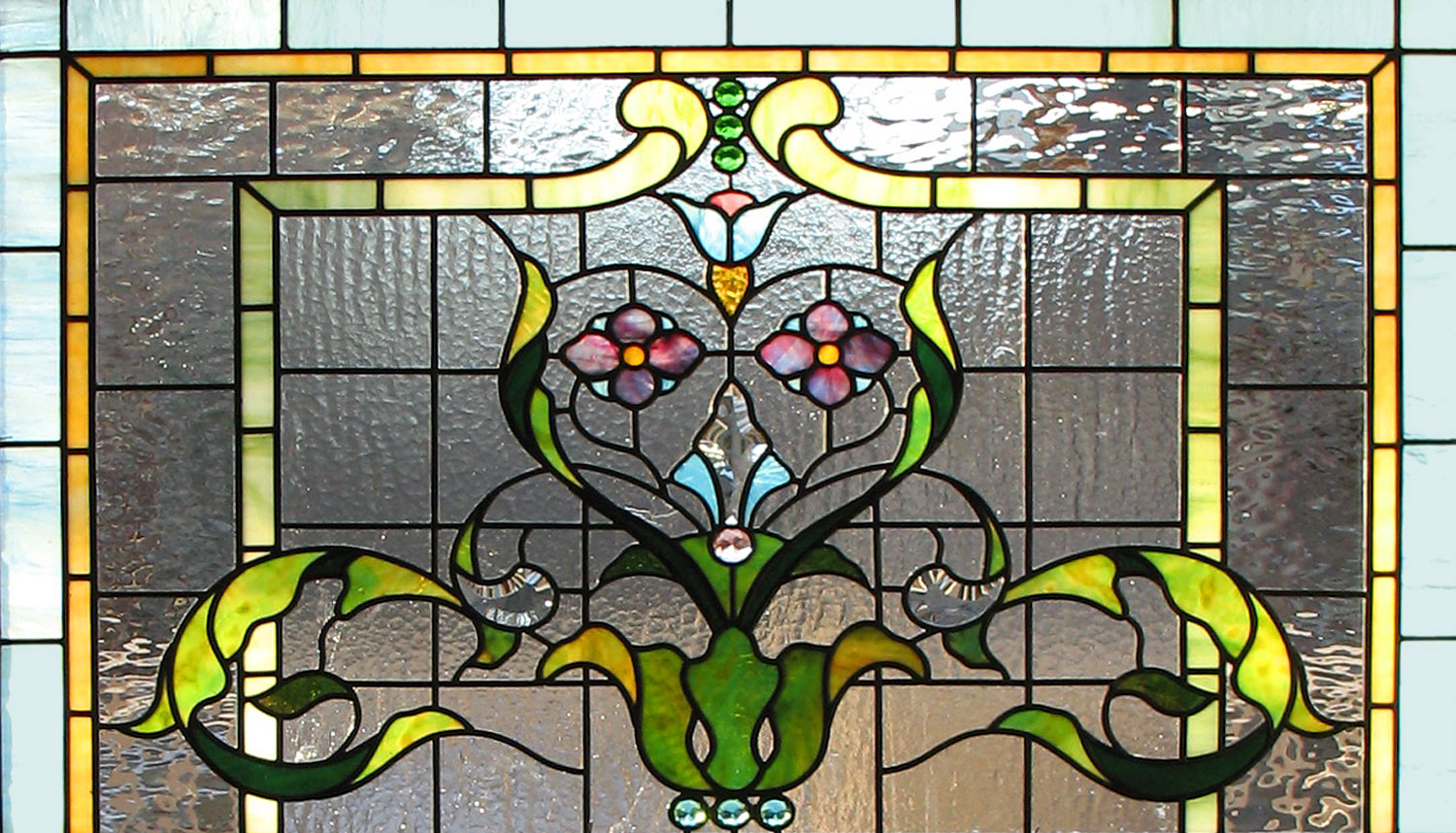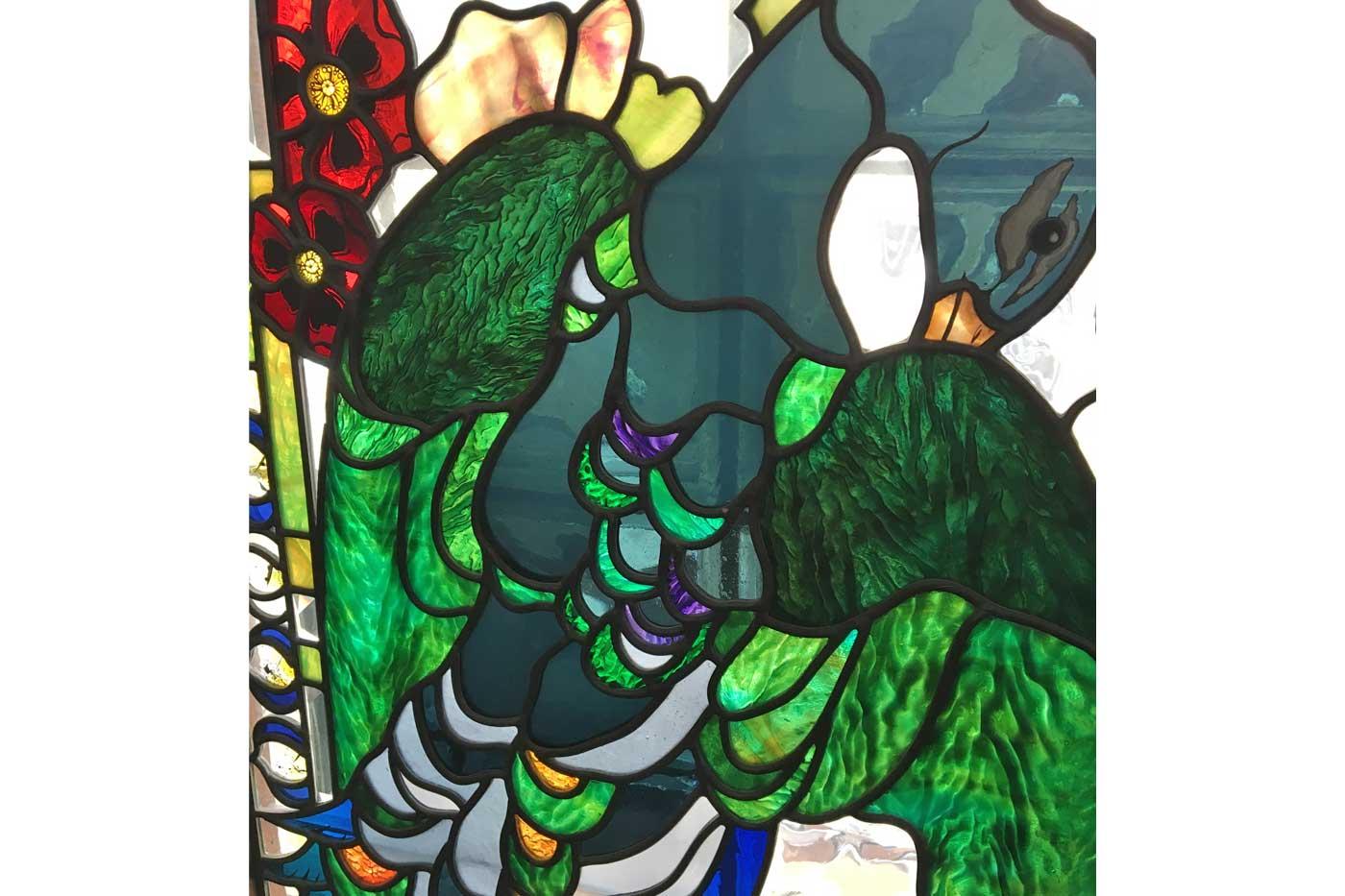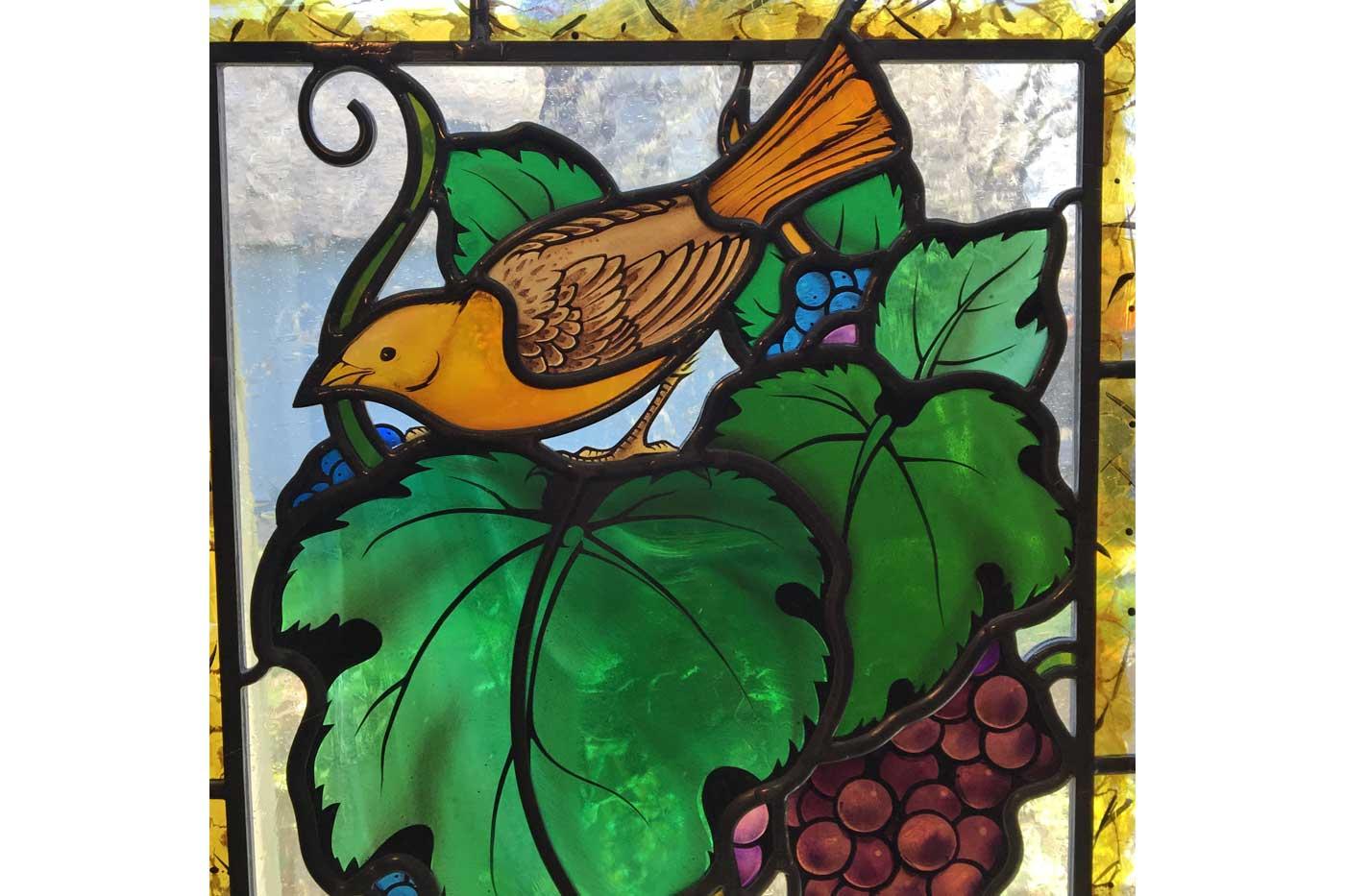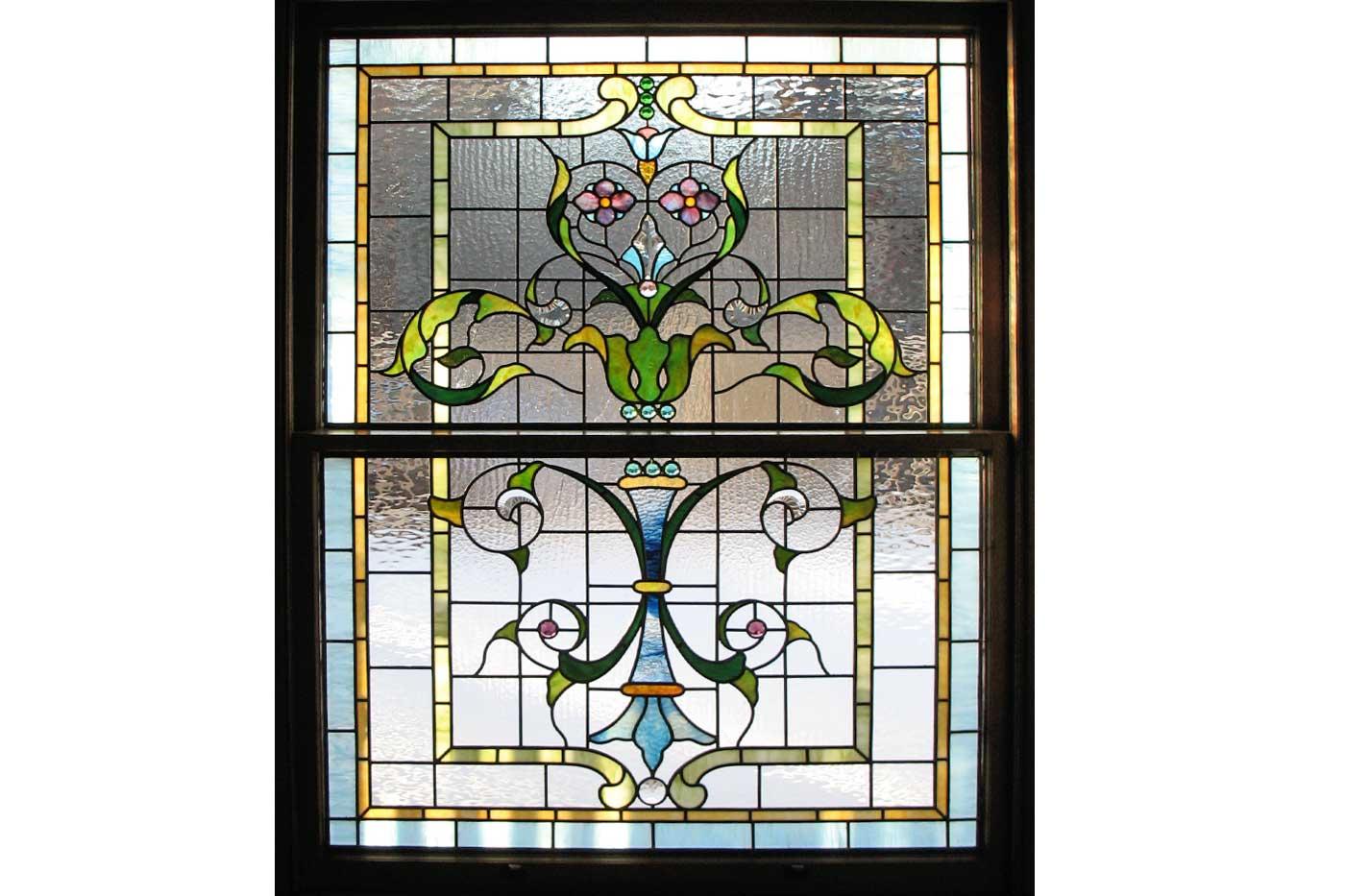The deciding factor elevating stained glass from a hobby craft to an art form is not only technique, but also materials. Ann Wolff’s glass art is especially brilliant not only because she trained with European masters and honed her skills over more than forty years, but because she goes to great pains to get the very best glass.
Along with the highest quality hand-blown and hand-painted glass, her designs incorporate unusual minerals: custom beveled quartz and amethyst.
“My work is about upping the ante from ordinary stained glass by using more advanced and unusual glass and techniques, a lot from the liturgical tradition,” said Wolff.
Wolff brings to her workbench a degree in medieval history and an extensive knowledge of the history of art glass.
“The medieval glass was the apotheosis,” she said. “Antique glass, hand-blown glass—the basic way it’s made today hasn’t changed much since the Middle Ages.”
Yet the glass art industry has changed. Dramatically.
“Stained glass is, in a way, dying,” said Wolff. “Many of the skills are barely known anymore and many of the big art glass manufacturers have closed. There are not many sheet glass blowers left. There are far, far fewer choices in glass than there were thirty years ago.”
Wolff sources most of her glass from Europe.
“The French made beautiful glass, the most beautiful reds and blues. Now Germany provides most of it,” said Wolff. “It’s hard to even get materials. I had to wait two months to get glass usually turned around in ten days.”
Fortunately, Wolff keeps her studio chock full of cherry-picked glass, both modern and vintage.
“Antique glass is a living glass, the only one that will cast its colors on the floor or wall,” she said.
Wolff’s designs incorporate a variety of glasses. To add privacy and decoration, she uses German roundels—glass discs, blown on the end of a pipe, and spun.
“Roundels are an old, old form of glass. They’ve been used in windows since there were windows,” she said.
To create the effect of fabric or flowers, she uses pleated drapery glass she cuts with her diamond saw won in a glass art competition. “You have to decide where the folds go,” she said. “Tiffany used it a lot, and John LaFarge.”
She uses German seedy glass filled with tiny bubbles: “It adds color and texture,” Wolff said.
She incorporates streaky glass and flash glass, which combines two layers of color in one piece of glass. And she works with hand-painted glass.
“Glass painting is extremely difficult,” said Wolff. “Glass painters were the most valuable members of any studio, and the face painter was the most valuable. In 19th century studios, the face painter came by carriage. Everybody else got to work some other way.”



































![DEl Kathryn Barton [Australian b. 1972] the more than human love , 2025 Acrylic on French linen 78 3/4 x 137 3/4 inches 200 x 350 cm Framed dimensions: 79 7/8 x 139 inches 203 x 353 cm](/sites/default/files/styles/image_5_column/public/ab15211bartonthe-more-human-lovelg.jpg?itok=wW_Qrve3)